- Home
- Quizzes
- My Quiz Activity
- Newsletters
- Sports Betting
- MY FAVORITES
- Add Sports/Teams
- SPORTS
-
NFL
- NFL Home
- Arizona Cardinals
- Atlanta Falcons
- Baltimore Ravens
- Buffalo Bills
- Carolina Panthers
- Chicago Bears
- Cincinnati Bengals
- Cleveland Browns
- Dallas Cowboys
- Denver Broncos
- Detroit Lions
- Green Bay Packers
- Houston Texans
- Indianapolis Colts
- Jacksonville Jaguars
- Kansas City Chiefs
- Las Vegas Raiders
- Los Angeles Chargers
- Los Angeles Rams
- Miami Dolphins
- Minnesota Vikings
- New England Patriots
- New Orleans Saints
- New York Jets
- New York Giants
- Philadelphia Eagles
- Pittsburgh Steelers
- San Francisco 49ers
- Seattle Seahawks
- Tampa Bay Buccaneers
- Tennessee Titans
- Washington Commanders
-
MLB
- MLB Home
- Arizona Diamondbacks
- Atlanta Braves
- Baltimore Orioles
- Boston Red Sox
- Chicago White Sox
- Chicago Cubs
- Cincinnati Reds
- Cleveland Guardians
- Colorado Rockies
- Detroit Tigers
- Houston Astros
- Kansas City Royals
- Los Angeles Angels
- Los Angeles Dodgers
- Miami Marlins
- Milwaukee Brewers
- Minnesota Twins
- New York Yankees
- New York Mets
- Oakland Athletics
- Philadelphia Phillies
- Pittsburgh Pirates
- San Diego Padres
- San Francisco Giants
- Seattle Mariners
- St. Louis Cardinals
- Tampa Bay Rays
- Texas Rangers
- Toronto Blue Jays
- Washington Nationals
-
NBA
- NBA Home
- Atlanta Hawks
- Boston Celtics
- Brooklyn Nets
- Charlotte Hornets
- Chicago Bulls
- Cleveland Cavaliers
- Dallas Mavericks
- Denver Nuggets
- Detroit Pistons
- Golden State Warriors
- Houston Rockets
- Indiana Pacers
- Los Angeles Clippers
- Los Angeles Lakers
- Memphis Grizzlies
- Miami Heat
- Milwaukee Bucks
- Minnesota Timberwolves
- New Orleans Pelicans
- New York Knicks
- Oklahoma City Thunder
- Orlando Magic
- Philadelphia 76ers
- Phoenix Suns
- Portland Trail Blazers
- Sacramento Kings
- San Antonio Spurs
- Toronto Raptors
- Utah Jazz
- Washington Wizards
-
NHL
- NHL Home
- Anaheim Ducks
- Arizona Coyotes
- Boston Bruins
- Buffalo Sabres
- Calgary Flames
- Carolina Hurricanes
- Chicago Blackhawks
- Colorado Avalanche
- Columbus Blue Jackets
- Dallas Stars
- Detroit Red Wings
- Edmonton Oilers
- Florida Panthers
- Los Angeles Kings
- Minnesota Wild
- Montreal Canadiens
- Nashville Predators
- New Jersey Devils
- New York Islanders
- New York Rangers
- Ottawa Senators
- Philadelphia Flyers
- Pittsburgh Penguins
- San Jose Sharks
- Seattle Kraken
- St. Louis Blues
- Tampa Bay Lightning
- Toronto Maple Leafs
- Vancouver Canucks
- Vegas Golden Knights
- Washington Capitals
- Winnipeg Jets
- NCAAF
- NCAAM
- Boxing
- Entertainment
- Lifestyle
- Golf
- MMA
- Soccer
- Tennis
- Wrestling
- More Sports
- RESOURCES
- My Account
- YB on Facebook
- YB on Twitter
- YB on Flipboard
- Contact Us
- Privacy Policy
- Terms of Service
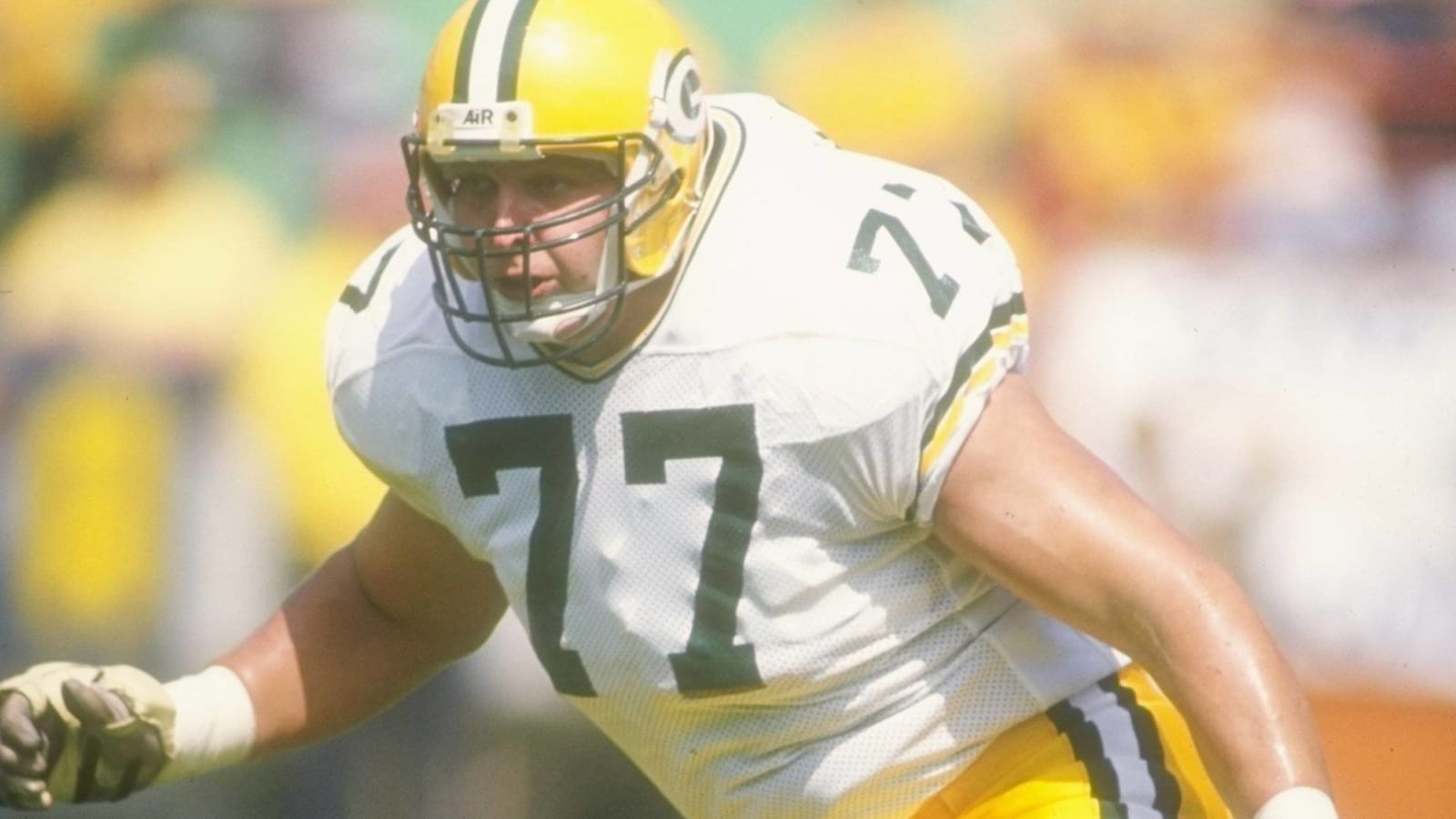
The biggest NFL Draft busts by position
While numerous success stories have spawned from the NFL Draft, the event's 80-plus-year history has also seen some seismic miscalculations. Each position, some more than others, has produced its share of draft busts. Here are the biggest draft missteps in each NFL position's history.
Quarterback: Akili Smith

Top-six picks Art Schlichter and Rich Campbell barely played; Raiders top pick JaMarcus Russell cost his team more money. Smith delivered the best combination of draft-slot disaster, financial penalty and opportunity lost. Before picking Smith third overall in 1999, the Bengals turned down a preposterous Saints offer -- their entire 1999 draft plus 2000 and 2001 first-round picks and an '02 second -- to draft the Oregon passer. Washington ended up accepting a lesser New Orleans offer. The Bengals gave Smith a $9 million-per-year deal, when the salary cap was $57M, but only used him as their starter in one season. He was out of the league by 2003.
Running back: Dıck Leftridge

Three years prior to Chuck Noll beginning his effort to lead the Steelers from NFL afterthought to 1970s dynasty, they were a bottom-tier NFL franchise. The team also received historically little production from a top-five pick in 1966. The Steelers chose Leftridge third overall out of West Virginia. While the fullback is still the highest-drafted player in Mountaineers history, he managed just four carries for 17 yards as a pro. The Steelers waived Leftridge prior to the 1967 season.
Running back: Lawrence Phillips

Not only did the Rams draft a troubled player sixth overall in 1996, but they also traded away two Pro Bowlers in the process. St. Louis dealt standout defensive tackle Sean Gilbert to Washington for the No. 6 choice and shipped fourth-year running back Jerome Bettis to Pittsburgh on draft day, clearing the way for Rich Brooks' team to draft Phillips. A star in Nebraska's option offense, Phillips failed to average 3.5 yards per carry as a pro, and the Rams cut bait midway through 1997. Multiple assault convictions landed Phillips in prison, where he committed suicide in 2016.
Wide receiver: Charles Rogers

Many less talented wideouts have played in the NFL, but Rogers going No. 2 overall in 2003 and washing out of the league after three seasons cements him as an all-time receiver bust. The Michigan State standout struggled with injuries and repeated positive drug tests, and when he was on the field, Rogers did not justify his draft slot. He finished a 15-game career with 440 yards and four touchdowns. After the Lions waived Rogers in 2006, no team claimed him. Detroit took underachieving wideouts Roy Williams and Mike Williams in the top 10 in each of the next two years.
Wide receiver: Troy Williamson

The Vikings traded Randy Moss to the Raiders in 2005. The centerpiece of Minnesota's haul was the No. 7 overall pick. The Vikings used the pick on a hopeful Moss replacement. Williamson was quite a bit off Moss' level. A deep threat out of South Carolina, Williamson never eclipsed 500 yards in a season and finished his five-year career with four touchdown catches. His massive rookie contract further added to the Vikings' misfire. After being traded to the Jaguars for a sixth-round pick, Williamson also discussed setting up a fight with former coach Brad Childress. No one won that particular Moss trade.
Tight end: Ken MacAfee

While the NFC East in the 1990s produced underwhelming tight end decisions — the Giants' Derek Brown pick and the Cowboys' David LaFleur choice — a 49ers 1978 selection ended up backfiring. MacAfee was a three-time All-American at Notre Dame and finished third in the Heisman voting in 1977. The 49ers chose him at No. 7 but saw him quit football after two seasons. Bill Walsh, interestingly, wanted to move the 250-pound tight end to guard and, per MacAfee, the 49ers were not pleased about his offseason medical school enrollment. Retiring after Joe Montana's rookie year, MacAfee became a successful dentist.
Tackle: Kevin Allen

Randall Cunningham's would-be left tackle did not pan out. The No. 9 overall pick in 1985 — chosen a round before the Pro Bowl quarterback — Allen played just one season and was benched for a sixth-round pick after four starts, with 1986 head-coaching hire Buddy Ryan showing near-immediate disdain for the Indiana alumnus. Allen served nearly three years in prison for a sexual assault conviction and is arguably the biggest bust in Eagles history.
Tackle: Tony Mandarich
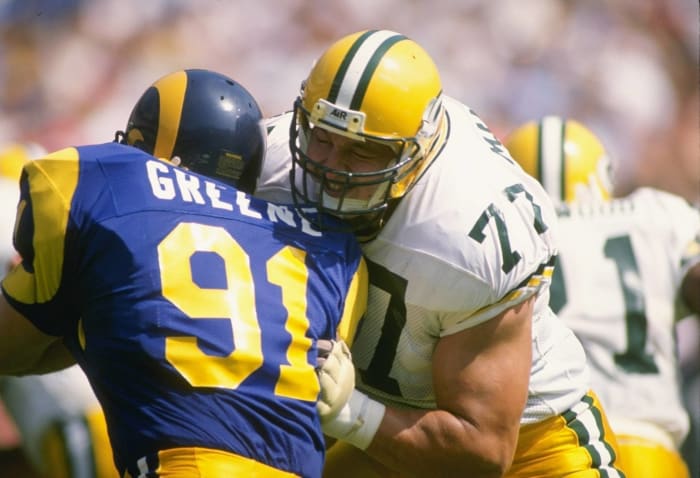
Although Mandarich did not remotely live up to the immense hype, he did become a semi-decent guard for the Colts in the late 1990s. However, the Michigan State phenom will go down as an all-time bust because of the players on whom the Packers passed. After the massive tackle went No. 2 overall in 1989, Hall of Famers Barry Sanders, Derrick Thomas and Deion Sanders came off the board. Following unremarkable years as the Packers' right tackle, Mandarich was gone by 1992. He resurfaced as a Colts guard in 1996. The one-time Sports Illustrated cover boy later admitted to using steroids.
Guard: Royce Smith

Archie Manning's career did not unfold nearly as well as his sons'. Part of that was because the Saints failed to build a competent team around their quarterback. One of New Orleans' blunders came in the 1972 draft, when the team made the rare move of using a top-10 pick on a guard. Chosen eighth overall, Smith lost his starting job in his second season and was off the Saints' roster by 1974. In three subsequent seasons with the Falcons, Smith was never a full-time starter. Hindsight is easy, but still. Franco Harris went five picks later.
Guard: Brian Jozwiak

A consensus All-American at West Virginia, Jozwiak remains one of the highest guard picks in draft history. Until Eric Fisher in 2013, Jozwiak represented the Chiefs' highest offensive line selection. They chose him with the No. 7 overall pick in 1986 but did not turn to him as a starter often. Jozwiak started just three games in an abbreviated NFL run, never having the chance to rebound because of the hip injury that ended his career during the 1988 season.
Center: Jesse James

Highly drafted centers tend to be employable for many years, leading a 1995 Rams pick to be the only second-rounder on this list. Chosen 62nd overall, James played in exactly two games in a two-year career. The Mississippi State product could not break into St. Louis' starting lineup and never returned after a four-game drug suspension in September 1996. The Rams used a 1995 undrafted free agent as their primary late-1990s center instead. Mike Gruttadauria started 35 games from 1996-99 — including 16 during the team's 1999 Super Bowl-winning season.
Defensive end: Andre Wadsworth

Another unfortunate injury victim, Wadsworth still did quite well financially. After going third in the 1998 draft — just after Peyton Manning and Ryan Leaf — the Cardinals defensive end signed a six-year, $42 million contract (with a salary cap nearly $150M lower than it is today). The modern rookie slot-contract system limits teams' damage from high picks that do not pan out, but the 1990s and 2000s represented a good time to be a first-round pick. Limited by knee maladies, Wadsworth lasted only three years and mustered just eight sacks. Five came during his rookie season.
Defensive end: Dimitrius Underwood
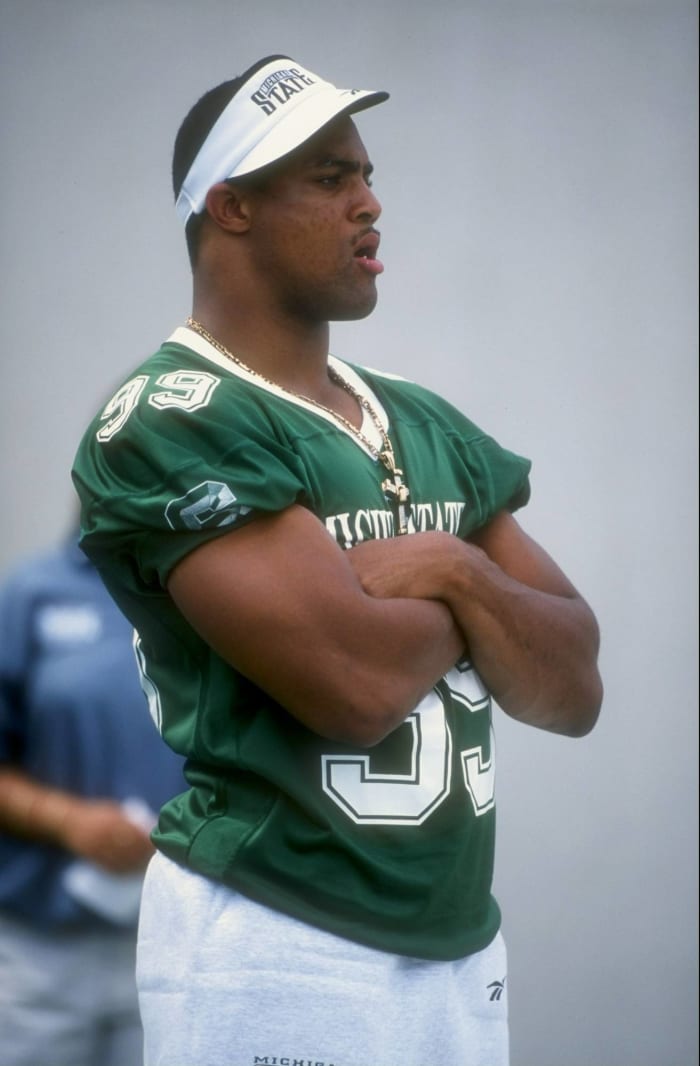
Underwood did not play a down for the team that drafted him. The Vikings took the talented lineman 29th overall in 1999, but a year after their Randy Moss gamble paid off, they waived Underwood after he walked out of a training camp practice. Afflicted with mental health problems, the 6-foot-6 dynamo — who Michigan State personnel were concerned about adjusting to the pro game — played only two NFL seasons. Both came with the Cowboys, his third team. Underwood later spent time in the CFL, unable to fully capitalize on his physical gifts.
Defensive tackle: Ted Gregory

The story goes Broncos coach Dan Reeves was alarmed by how much shorter Gregory was than his listed 6-foot-1 frame. Taken with the No. 26 overall pick in 1988, the Syracuse alumnus did not last through training camp with Denver. The Broncos traded Gregory to the Saints for 1987 first-round defensive end Shawn Knight, who also had a short NFL career. Gregory played in just three NFL games — all in 1988 — with a knee injury ending his chances of proving the Broncos wrong.
Defensive tackle: Johnathan Sullivan
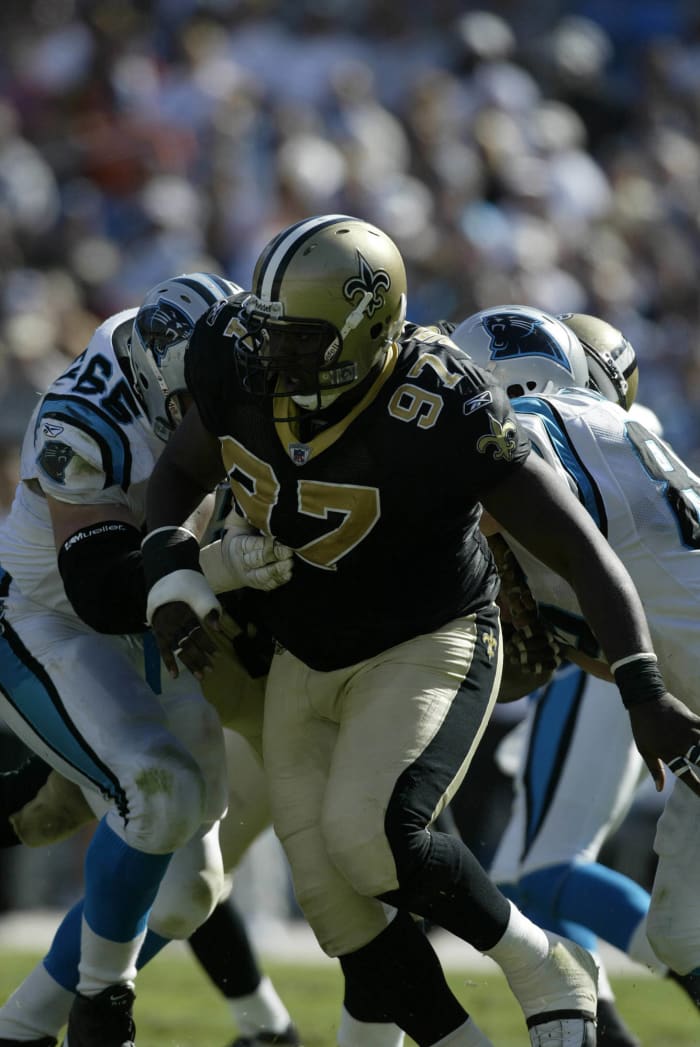
Conditioning issues doomed Sullivan, whom the Saints selected sixth overall in 2003. New Orleans owned two first-round picks that year and traded both to move up to the No. 6 spot for Sullivan, a standout at Georgia. But the interior defender lasted just three seasons in New Orleans. He could not maintain his starting job long after his rookie campaign, at one point ballooning to 350 pounds. The Patriots, as they did with Albert Haynesworth years later, took a flier on a fitness-challenged talent but cut Sullivan before the 2006 season.
Linebacker: Mike Junkin

In a big 1987 trade-up maneuver, the Browns vaulted from No. 24 to No. 5 to select Junkin. Coach Marty Schottenheimer loved the Duke linebacker's potential, but at a time when the Browns were in an AFC arms race with the Broncos, their offseason move did not pay off. Although Cleveland made it back to the AFC title game in 1987, Junkin's contributions were minimal. He lasted just two years with the Browns, before Schottenheimer attempted to salvage his career in Kansas City. Junkin did not stick there either.
Linebacker: Huey Richardson
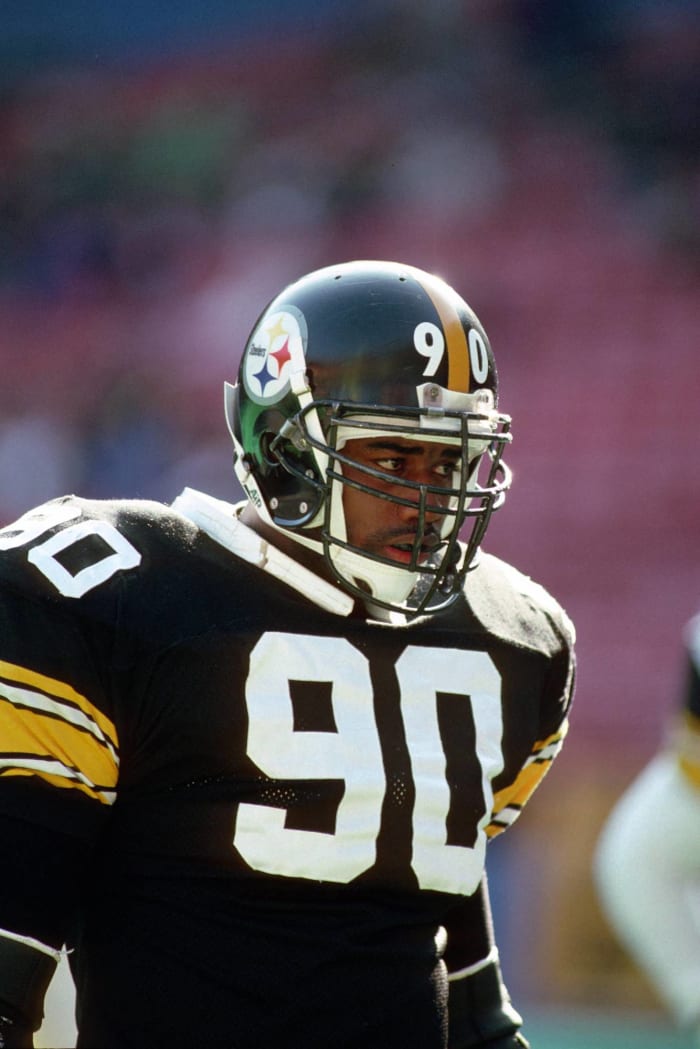
In the final year of Chuck Noll's 23-year Hall of Fame tenure, the Steelers chose Florida's Richardson 15th overall. But the 1991 first-rounder was not part of any Bill Cowher-era "Blitzburgh" defense. Pittsburgh used Richardson in just five games as a rookie, and Cowher and then-Steelers director of football operations Tom Donahoe traded him to Washington for just a seventh-round pick in 1992. Richardson played 11 more NFL games and was in camp with teams through '94 but retired without making a start.
Linebacker: Vernon Gholston

Mel Kiper Jr. was critical of this pick in the moment, and the ESPN draft guru turned out to nail this 2008 Jets misstep. Gholston was a woefully ineffective pass rusher, registering no sacks in his three-year Jets run. Shuttling between defensive end and outside linebacker did not end up mattering for the Ohio State product. Rex Ryan's 2009 arrival did not help the No. 6 overall pick, who made just five NFL starts. The Jets cut the cord after the 2010 season. Gholston did not play again.
Cornerback: Bruce Pickens

Despite choosing Deion Sanders with the 1989 No. 5 overall pick, the Falcons doubled down on their secondary two years later. Jerry Glanville's team selected Pickens at No. 3 overall out of Nebraska. The high-end cornerback prospect sputtered from the jump, earning only four starts with the team that drafted him. By 1993, two of the Falcons' top three 1991 picks were off the team. While '91 second-rounder Brett Favre left in an all-time regrettable trade, Pickens did not revive his career elsewhere. His post-Atlanta career included just one more start, with the Raiders, in two seasons after being dealt.
Cornerback: Justin Gilbert

In 2014, the Browns pieced together an unbelievably interesting draft. They added long-term starters Joel Bitonio and Christian Kirksey on Day 2, but this came after a historically horrendous first round. Cleveland chose Gilbert at No. 8 overall and, amid full-on chaos, took Johnny Manziel 14 spots later. Because Manziel's draft status does not quite measure up to other QB busts, he was not the worst Browns pick that year. Gilbert managed just two starts in Cleveland and was gone after two seasons. He has not played since 2016.
Safety: Patrick Bates

One of the highest safety picks ever, Bates bombed with the Raiders. Al Davis' team selected the 6-foot-3, 215-pound defensive back in the No. 12 overall slot in 1993. The UCLA and Texas A&M product did not impress as a starter (in a seven-game first-string run in 1994) and left the team a year later to attempt a music career. Bates made a comeback, with the Raiders trading him to the Falcons, but that only lasted a year. The promising talent was done with football by age 26.
Safety: Rashard Anderson
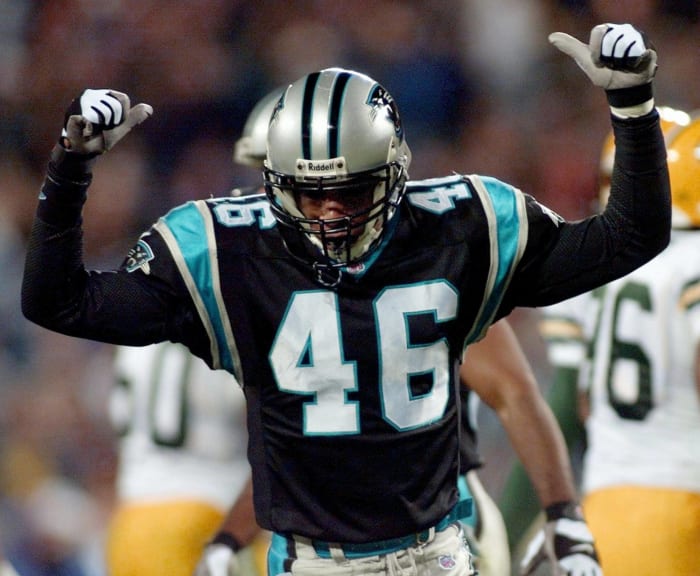
During a down period in Panthers history, they blew their 2000 first-round pick. Chosen 23rd overall out of Jackson State that year, Anderson could not stick in the NFL. What turned into a two-year ban for substance abuse ended Anderson's career after the 2001 season. The Panthers in 2001 attempted to shift the safety to cornerback — a transition that did not go well during a slate that saw Carolina lose its final 15 games — and ended up cutting him by the time he was reinstated in 2005.
Kicker: Steve Little

Thirty-eight years before Roberto Aguayo, Little made for a far worse investment — one of the worst in league history. The Cardinals took a kicker 15th overall in 1978. That kicker, who earned All-American honors during a season in which he made an NCAA-record 67-yard field goal while at Arkansas, proceeded to connect on just 13 of his 27 NFL field goal tries. St. Louis cut Little midway through the 1980 season. Sadly, this led to a tragedy. Little broke his neck in a single-car accident hours after he was released. He died in 1999.
Punter: Russell Erxleben
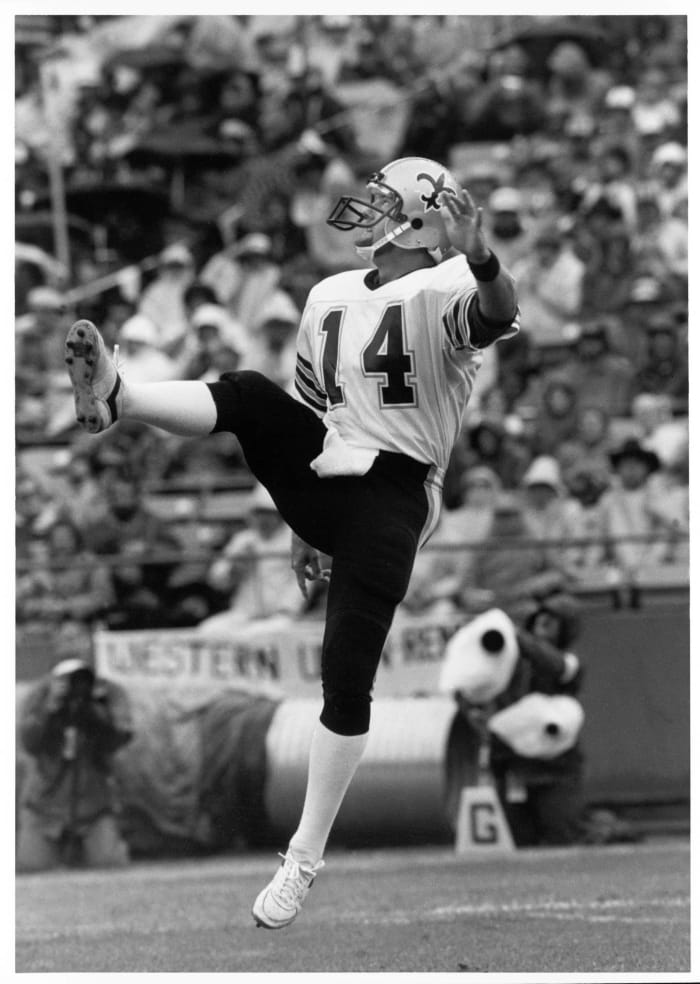
After making three 60-plus-yard field goals during the 1977 season as a Texas Longhorn, Erxleben made his way into the early portion of the 1979 NFL Draft. The Saints used their first-round pick — No. 11 overall — on the specialist, but he attempted just eight field goals as a pro. Instead, New Orleans made Erxleben a full-time punter -- which is obviously not a good use of a Round 1 pick. The Saints' high-profile punter decision did not go as well as the Raiders' Ray Guy move, with Erxleben making it only five seasons with the team.
Sam Robinson is a Kansas City, Mo.-based writer who mostly writes about the NFL. He has covered sports for nearly 10 years. Boxing, the Royals and Pandora stations featuring female rock protagonists are some of his go-tos. Occasionally interesting tweets @SRobinson25.
More must-reads:
- 'Freakin dream come true': Jets draft FSU's record-breaking QB
- Winners and losers from Day 3 of 2024 NFL Draft
- The '100 catches in an NFL season' quiz
Breaking News
Customize Your Newsletter
 +
+
Get the latest news and rumors, customized to your favorite sports and teams. Emailed daily. Always free!
Use of this website (including any and all parts and
components) constitutes your acceptance of these
Terms of Service and Privacy Policy.

